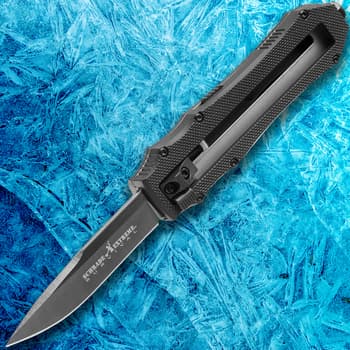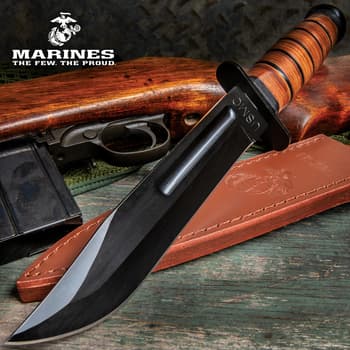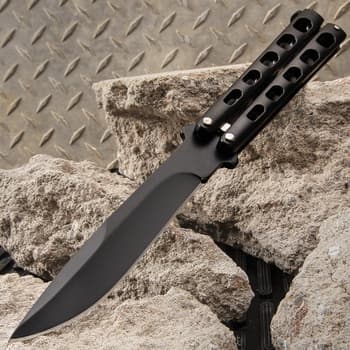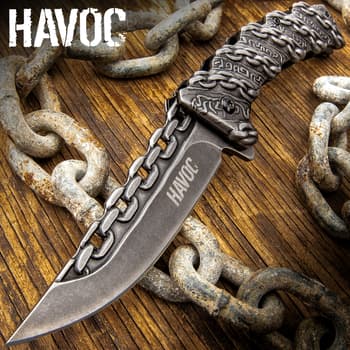Date Published: 2021-01-20
Parts of a Knife: The Anatomy of the Knife
By Adelia Ladson
The Different Parts of a Knife
When you’re shopping for a knife, whether it’s a fixed blade or a folding knife, to find what you’re specifically looking for is easier when you actually know what you’re looking at. What is the tang? What is jimping? What do they mean by “scales”? These are some of the questions that are essential to know the answers to when you’re trying to find the knife that fits your needs. Here are the basic parts of both a fixed blade and a folding knife.Knife Anatomy
These are the basic part of any knife whether it’s a fixed blade or a folding knife.Spine
This is the unsharpened part of the blade that is exactly opposite the cutting edge and is where the strength and power of the blade lies. It’s going to be the thicker part of the blade.Cutting Edge
This is the sharpened part of the blade, opposite from the spine, that does all cutting and slicing work.Belly
This is curved part of the blade along the cutting edge of the knife that leads up to the point. This allows the knife to slice more efficiently because the angle of the edge is constantly changing due to the curve. The larger the belly of the knife, the more effective it is at performing slicing and slashing tasks.Point
The point is the tip of the blade and its position and shape define the overall shape of the blade. It comes in a variety of shapes, which can be an important factor in deciding what kind of fixed blade that you want. The point of the blade can be specific to what kind of tasks the knife is better suited for. Some of the points you’ll find are a spear point, clip point, drop point, trailing point, Wharncliffe, sheepsfoot, hawkbill, razor, tanto and guthook.Jimping
Jimping is a series of notches cut into the spine of the blade, the handle or sometimes integrated into the finger choil to give you a better grip on the knife when using. The idea is that your finger or thumb can rest on them and secure your grip.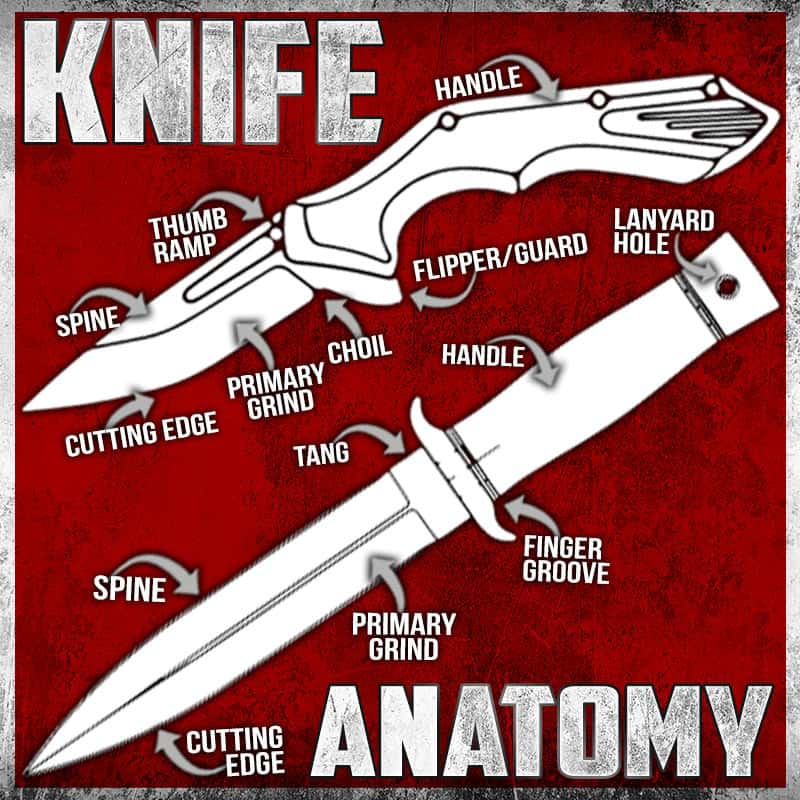
Fixed Blade Specific
A fixed blade is a knife that has a blade that extends straight out from the handle like a kitchen knife. Fixed blades are traditionally carried in some type of belt sheath and have a long history of being the cutting and slicing tool from time out of mind.Handle
The handle is what supports the blade of the knife and it can be one piece or made up of two scales that are attached to the tang with pins or screws. Scales are the plates of material that the handle is made of and can be made of anything from polypropylene and steel to wood and bone.Pommel
The pommel is the end of the handle that’s opposite from the end where the blade extends. It can be one piece with the handle, or a separate piece added to the end of the handle, which most likely will be made of steel.Lanyard Hole
This is a hole, either lined with a metal insert or not, that’s at the end of the handle for the purpose of inserting a lanyard or paracord as another option of carry or hanging for storage.Tang
The tang of a knife is the part of the blade that extends into the handle. A full-tang knife has the handle pieces or scales attached to each side of the tang to form the handle of the knife.Finger Choil
The finger choil is part of the blade that’s between the cutting edge and the tang, just below the handguard. Its purpose is so that your finger can safely grip that area when holding and using the knife as an added measure to help with control of the knife.Guard
On a fixed blade knife, the Guard can be very pronounced to protect your hand from slipping to the blade or it can be just a bolster, which is a metal piece that supports the point where the blade tang goes into the handle.Folding Knife Specific
A folding knife is simply a knife with a blade that folds out or “opens” from the handle, where it is housed when not in use. The idea being that it will easily fit in the pocket for everyday carry. Generally, a pocket knife is either assisted opening or manual opening.Lanyard Hole
This is a hole in the end of the handle for the purpose of inserting a lanyard or paracord just like on a fixed blade knife. In a folding knife, however, it can also be a hole or slot in an extended liner.Liners
The liners are metal plates that are the form the case that the blade folds into and that the handle scales are attached to. This combination of parts forms the overall handle of the folding knife.Handle Scales
Scales are the plates of material that the handle is made of and can be made of anything from polypropylene and steel to wood and bone. The scales are attached to the liners and can be completely decorative pieces or functional pieces that provide a secure grip on the knife.Handle Pins
These can be pins made out of metals like brass or stainless steel or they can be actual screws. They are what secure the handle scales to the liners.Bolster
This is a metal piece that supports the point where the blade and the handle joins, but folding knives can have both a front and a rear bolster to provide balance. The bolsters also tend to be a decorative way of bookending the handle.Joint
This is the point where the blade and the handle join together with a pivot pin so that it will open, and then fold closed.Spring
This is what exerts the pressure, in an assisted opening mechanism, to open and close the knife quickly without a lot of effort.Flipper
This is a protrusion on the blade spine, close to the joint, that can be used to flip open the knife when pressure is applied.Thumb Stud
This is a protrusion that is added to either one side or both sides of the blade, close to the joint, that can also be used to flip open the knife.Nail Nick
This is a curved slot in the blade, of a manual opening knife, that can be used to pull the blade open with the thumb or a fingernail.Lock
This is the mechanism that keeps the blade open or closed in place and is built into the construction of the handle. It requires that the user exerts pressure to release it. Common lock varieties include liner locks, frame locks, button locks and lockbacks.Pocket Clip
On folding knives, this is a metal clip attached to one of the handle scales so that the knife can be secured to a pocket for ease of carry.Fixed Blade vs Folding Knives
When it comes to every day carry knives (EDC), you have a plethora of options. They can be different colors, different sizes and different materials. Choosing a knife can sometimes be mind-boggling, if you don’t know what you’re looking for. The first thing, though, you need to decide is whether you want a fixed blade knife or a folding pocket knife as your EDC.Benefits of a Fixed Blade Knife:
- You have a solid piece of steel instead of something that has parts that could malfunction or break.
- It’s more convenient to draw and put away.
- You can perform heavy-duty jobs that require chopping, hammering or prying without fear of damaging it.
- They can be less expensive than a folder.
- They require less maintenance and are easier to clean.
Benefits of a Folding Pocket Knife:
- It’s more practical to carry because it’s compact and goes right in your pocket.
- It’s not illegal to carry.
- It doesn’t draw attention at the workplace or in public places.
- It’s a long-time manly tradition.
- It’s better at smaller tasks that require precision.
Whether you choose a fixed blade or a folding knife, pick the EDC that fits you and meets your specific needs. The information above may help you make the decision a little less complicated. As you can see, they both have great benefits. Of course, there is a third option – get one of each and switch them out as needed.
Related Products






















